Blue shade perennials are a great choice for gardeners who want to add some cool, calming colors to their gardens. If you’re wondering what blue flowering plants grow best in full shade, the list below has some that will make a great addition to your sunless spots.
Few blue plants grow in full shade, but those on the list below can tolerate different amounts of shade.
1. Blue Wood Aster (Symphyotrichum cordifolium)
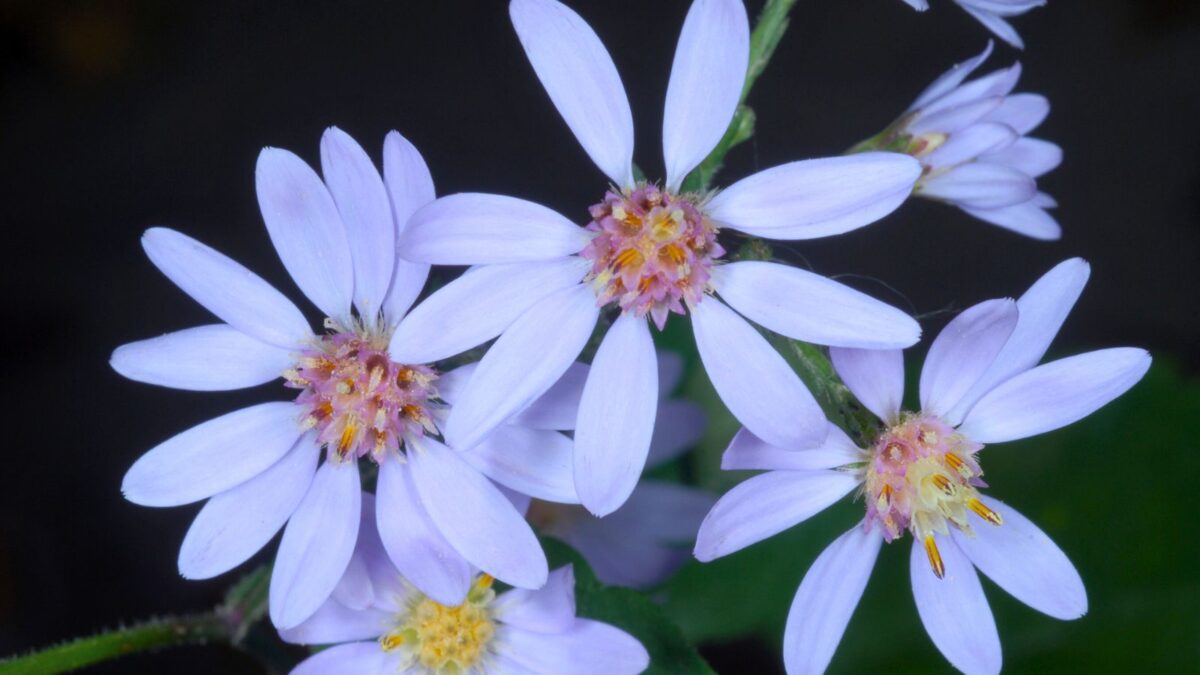
By Douglas Goldman – Own work, CC BY-SA 4.0
Blue wood aster is a perennial plant that grows best in zones 3 to 8.
It is native to much of eastern North America, from Canada to the Gulf of Mexico, and grows well in woodlands, meadows, and along roadsides.
It usually grows 2 to 5 feet tall and has clusters of small, daisy-like flowers that bloom from August to October. The flowers are usually blue or purple, although they can also be pink or white flowers, and they attract a variety of pollinators, including bees, butterflies, and moths. The leaves are heart-shaped and can be up to 6 inches long.
Asters need a few hours of sun every day in order to put on a nice blooming show, but they can tolerate some shade too.
2. Delphiniums (Delphinium spp.)
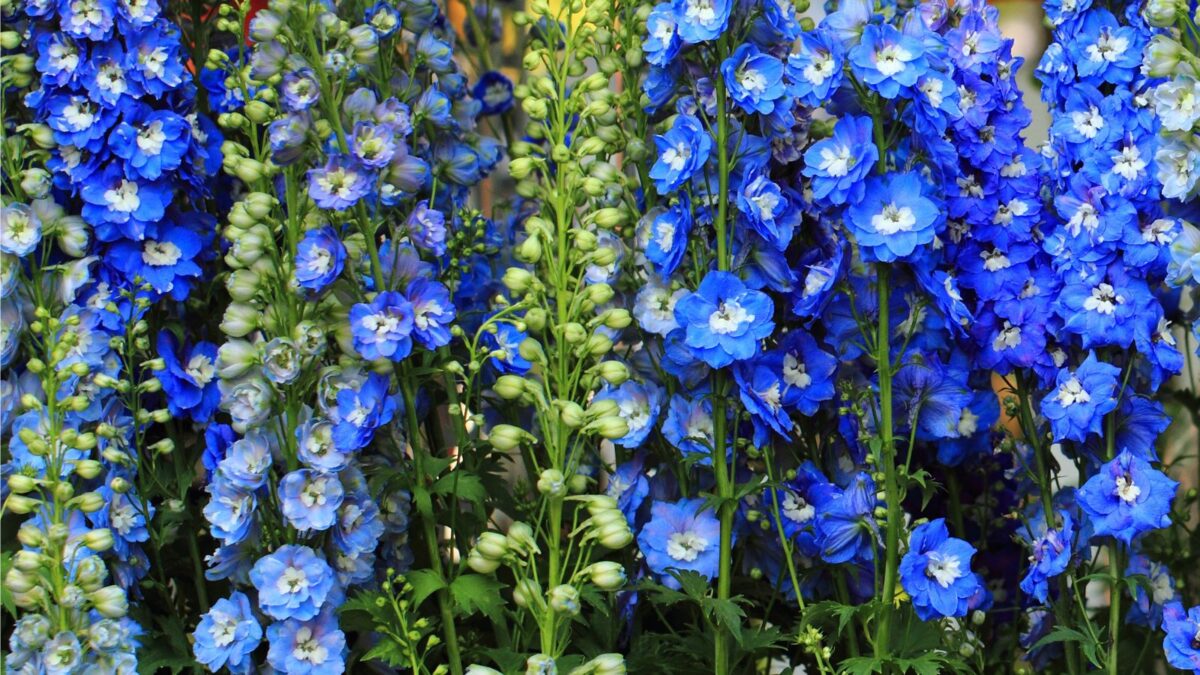
Image credit: Depositphotos.
Delphiniums are tall, stately plants with spires of blue flowers. While they prefer well-drained soil and full sun they will tolerate some light shade in zones 3 to 7. They may need staking as they grow tall and should be divided every few years to keep them healthy.
Delphinium plants thrive in rich, well-draining soil that is kept consistently moist. They are often planted in the fall or spring and should be spaced about two feet apart to allow for adequate air circulation.
While they can be propagated by seed, it can be challenging. Instead, it’s best to take cuttings in the spring from the new shoots the plant will put out.
3. English Bluebells (Hyacinthoides non-scripta)
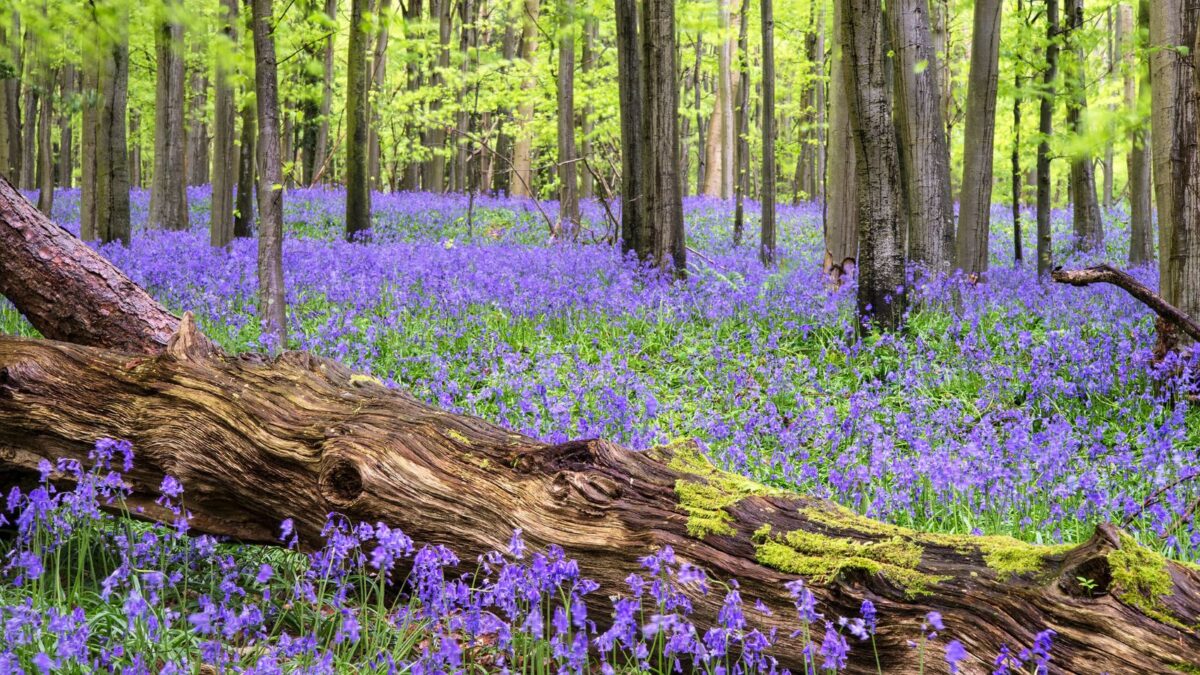
Image credit: Depositphotos.
English bluebells are spring-flowering plants that produce clusters of small blue blooms. They prefer partial to full shade and moist, well-drained soil and grow best in zones 5 through 8.
They are self-seeding and can spread quickly, so be sure to plant them where you want them to grow.
Bluebells are typically planted in the fall and should be placed about 3-4 inches deep and spaced about 3-4 inches apart. Fertilizing is not necessary for bluebells, but a light application of a balanced fertilizer in the spring can help to promote healthy growth and blooming.
4. Siberian Iris (Iris sibirica)
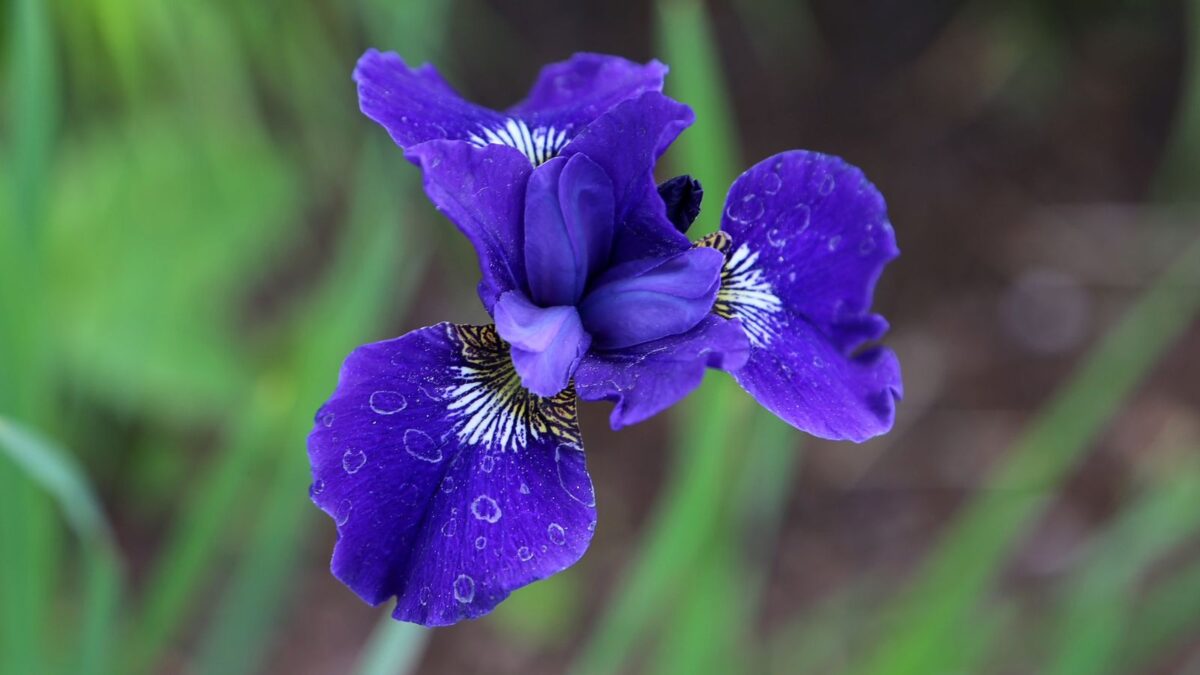
By W. Bulach – Own work, CC BY-SA 4.0
Siberian iris has beautiful blue-purple flowers and grass-like foliage. They prefer moist soil and full sun to partial shade, are low-maintenance, and can be divided every few years to keep them healthy.
It is a clump-forming plant that typically grows to a height of 2-4 feet tall and 1-2 feet wide. The plant produces narrow, grass-like leaves that are 2-3 feet long, and tall, slender stems that bear 2-6 flowers each.
They bloom in late spring to early summer, in zones 2 to 9, and are often used in cut flower arrangements.
5. Blue Hosta (Hosta sieboldiana)
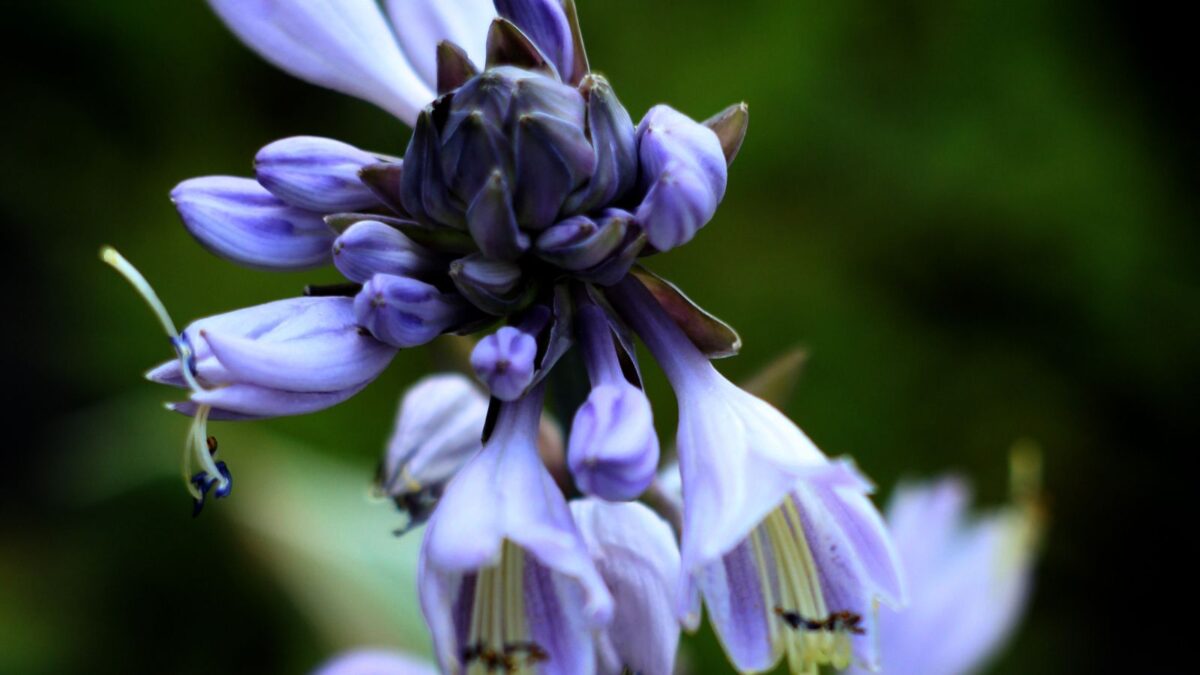
Image credit: Depositphotos.
Is there a blue hosta? Yes! Blue hosta has blue-gray foliage that can provide a beautiful contrast to other plants in the garden in zones 3 through 9. They prefer partial to full shade and moist, well-drained soil. They are also low-maintenance and can be divided every few years.
Blue hostas are typically smaller in size than other hosta varieties, with leaves that range from powder blue to bright blue-green in color. The foliage is usually heart-shaped, with a waxy texture that provides a unique appearance and feel.
Blue hostas are also known for their ability to change color slightly depending on the amount of sunlight they receive, with leaves turning a deeper blue-green in full shade and lighter blue in partial sun.
Hostas are relatively low-maintenance plants that can be grown in a variety of settings, from container gardens to woodland gardens.
6. Blue Wonder Catmint (Nepeta Mussinii)

By James Steakley – Own work, CC BY-SA 3.0
The blue wonder catmint is a hardy perennial with blue flowers and gray-green foliage, growing in zones 3 through 8. It prefers well-drained soil and full sun but can also tolerate a short amount of light shade. It is also a drought-tolerant plant that does not require regular watering, making it a popular choice for xeriscaping and water-wise gardening.
Drought-tolerant and low-maintenance, catmint has a distinctive scent that is often described as a combination of mint and lemon. The plant produces clusters of lavender, blue, or white flowers that bloom from late spring to early fall. The leaves of catmint are gray-green and slightly fuzzy, giving the plant a soft and textural appearance.
7. Blue Veronica (Veronica spicata)
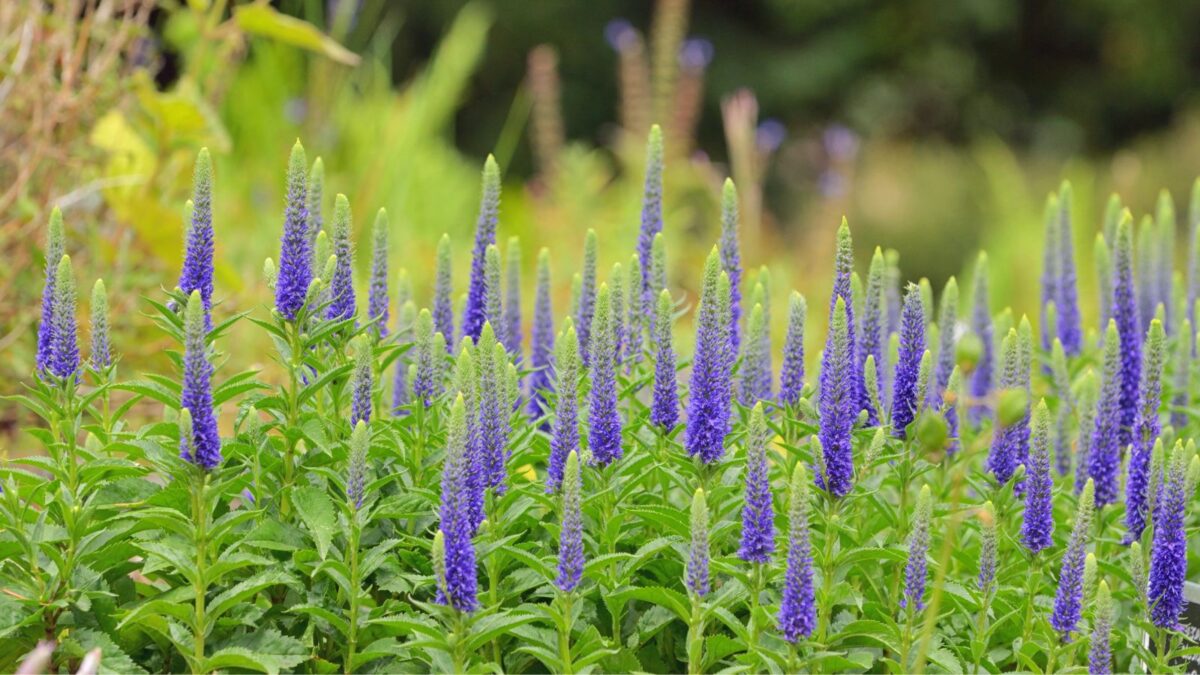
Image credit: YAY Images.
Blue Veronica, also known as speedwell, has tall spikes of blue flowers and prefers full sun to partial shade, and grows well in zones 3 to 11. It prefers well-drained soil and is also low maintenance. When you want to bring the color blue into your shade garden, this is a great choice.
Blue Veronica typically grows to a height of 1-2 feet and a width of 1-1.5 feet, forming a dense, bushy clump of narrow leaves. Deadheading spent flowers can help to promote new growth and extend the flowering period, and the plant can benefit from division every few years to maintain healthy growth and prevent overcrowding.
8. Balloon Flower (Platycodon grandiflorus)
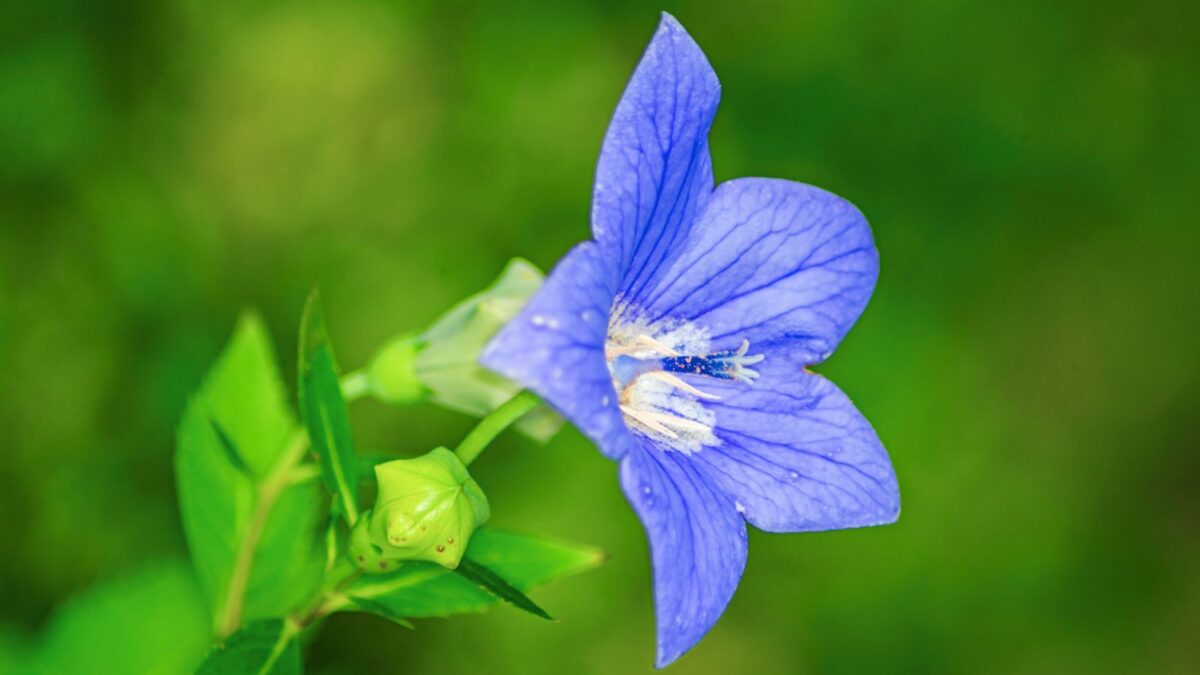
Image credit: YAY Images.
Balloon flowers are a charming perennial plant that grows in Zones 3-9. Named for their distinctive balloon-like buds that burst open to reveal stunning star-shaped flowers in shades of blue, pink, and white, balloon flowers prefer full sun but can tolerate some light afternoon shade.
They typically grow to be about 12-24 inches tall and prefer well-drained soil. Balloon flowers are easy to care for and make a lovely addition to any garden or landscape.
9. False Indigo (Baptisia)

Image credit: Depositphotos.
False indigo flowers grow in Zones 3-9. They are known for their striking blue-purple flowers that bloom in late spring to early summer.
False indigo plants prefer full sun but can tolerate some light shade. They typically grow to be about 3-4 feet tall and wide, and they have a deep root system that makes them drought-tolerant and low-maintenance.
Deer-resistant, false indigo plants are a great addition to any garden because they attract pollinators like butterflies and bees.
More Perennial Flowers That Love Shade
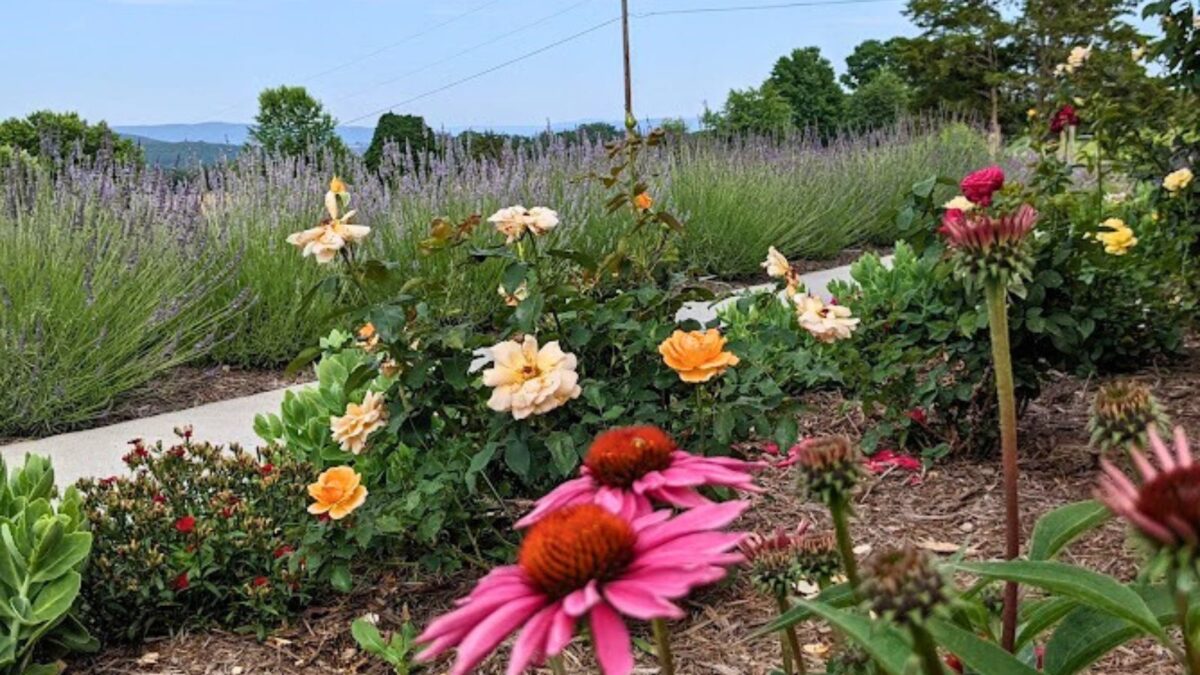 Image credit: Backyard Garden Lover.
Image credit: Backyard Garden Lover.
Want more colors to pop in your garden? Try these:
There are also a few vegetables that grow in the shade (and even thrive). Beyond flowers and vegetables, there are other shadling loving plants and perenials to consider too:
Including a few perennials with blue colored flowers in your shady garden spots can add a beautiful and calming touch to any garden. Mix in a few yellow flowers for a bright and stunning combination. And if you are still looking for more blue flowers for a shady garden, here are a few more: perennial geraniums (Geranium bohemicum), pincushion flowers (Scabiosa japonica), bush violet (Browallia speciosa), and lobelis (one of my favorites).

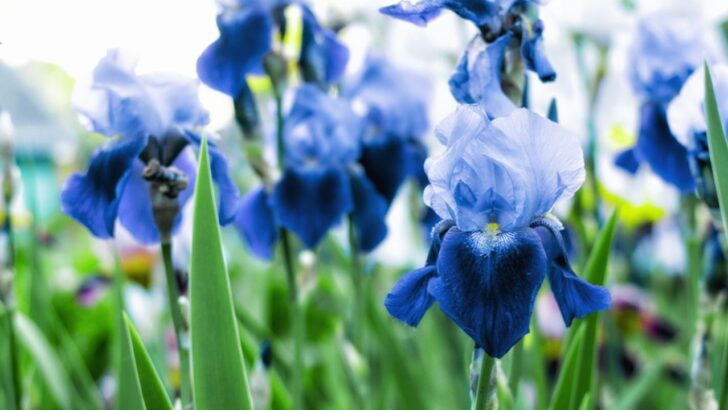

9 Pink Shade Perennials To Liven Up A Shady Garden
Saturday 8th of April 2023
[…] 9 blue shade perennials […]
10 Yellow Perennials For Shade You'll Fall In Love With
Friday 31st of March 2023
[…] 9 blue shade perennials […]
10 Great Purple Shade Perennials For Your Garden
Friday 31st of March 2023
[…] 9 blue shade perennials […]
9 Pristine White Shade Perennials For Low Light Gardens
Friday 31st of March 2023
[…] 9 blue shade perennials […]
5 Red Shade Perennials For Your Low Light Garden
Friday 31st of March 2023
[…] 9 blue shade perennials […]